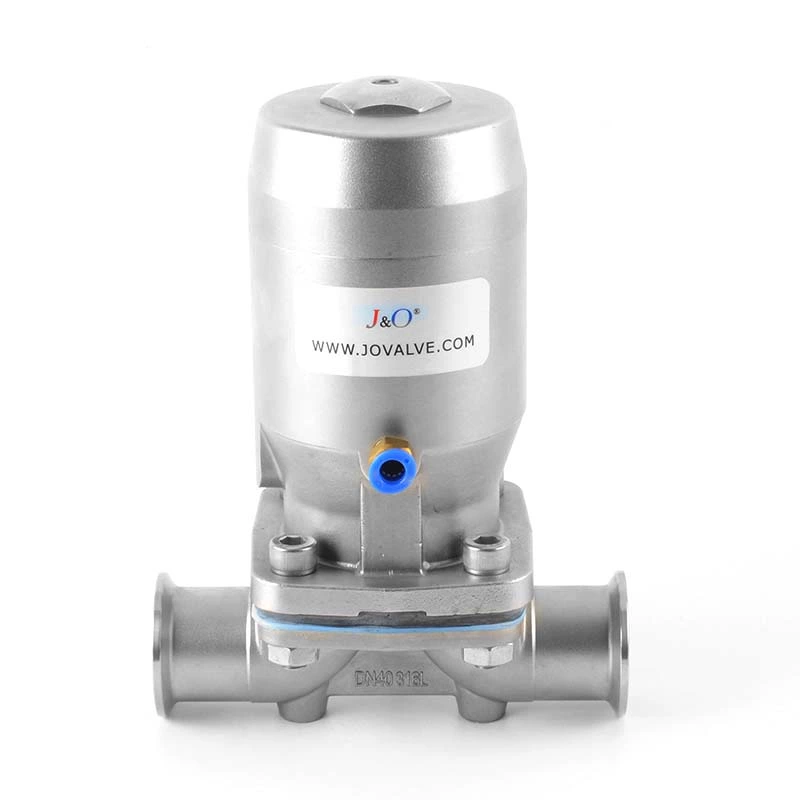Pneumatic Diaphragm Valve Refers To A Valve Body And Valve Cover With A Flexible Membrane Or Combined Diaphragm Installed.
Sanitary Diaphragm Valve is also called diaphragm stop valve, which refers to a compression device with a flexible membrane or a combined diaphragm installed in the valve body and the valve cover, and its closing part is connected to the diaphragm. The valve seat can be weir-shaped or the wall of the straight-through flow channel. The flexible membrane or combined diaphragm of the diaphragm valve is surrounded by a control chamber. By injecting compressed air, natural gas, water or other substances into the control chamber to generate pressure, the flexible membrane or combined diaphragm is compressed and bent, so that the cross-section of the diaphragm changes or even closes, thereby achieving the purpose of controlling flow and feeding. When the control pressure is about 2.5 bar higher than the pressure of the conveying liquid, the diaphragm valve can seal gas, liquid, paste and powder liquid. The highly elastic diaphragm can convey any material, especially suitable for conveying powder materials.
The diaphragm valve consists of only three parts: the valve body, the diaphragm and the valve cover, and the structure is very simple. And its operation can realize the control and adjustment of the working state and running speed of the valve only through compressed air. During the entire operation, the material only contacts the diaphragm in the valve body, and the contact with other parts is effectively isolated by the diaphragm. Therefore, using a diaphragm valve to transport some sensitive materials will have a good effect.
Pneumatic diaphragm valves use pneumatic diaphragm valves with simple structure, small flow resistance, larger flow force than other valves of the same caliber, no leakage, can be used to regulate high viscosity and suspended particle fluids, and according to the different diaphragm materials (rubber or polytetrafluoroethylene), it is suitable for regulating strong alkali and highly corrosive media. It consists of a pneumatic diaphragm valve equipped with a regulating valve actuator. The "mountain" convex surface between the diaphragm and the valve body is sealed and isolated from the outside world (no stuffing box), which is particularly suitable for corrosion-resistant and highly toxic occasions.
Now let's understand what the pneumatic diaphragm valve needs to maintain:
1. Maintenance precautions for pneumatic valves. Before starting maintenance, pneumatic diaphragm valves should be purged with clean compressed air inside the pneumatic valve cylinder. The air filter should also be regularly cleaned and drained. The source must be kept clean and dry. The valve should be stored in a dry and ventilated room, and both ends of the passage must be blocked.
2. Pneumatic diaphragm valves that have been stored for a long time should be checked regularly to remove dirt. Pneumatic valves should also be coated with anti-rust oil on the processed surface.
3. After the pneumatic diaphragm valve is installed, it should be inspected regularly. The main inspection items are:
(1) Wear of the sealing surface.
(2) Wear of the trapezoidal thread of the valve stem and the valve stem nut.
(3) Whether the packing is outdated and invalid. If damaged, it should be replaced in time.
(4) After the pneumatic diaphragm valve is overhauled and assembled, a sealing performance test should be carried out.
